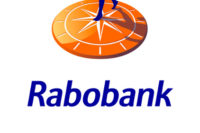Food Ingredients Asia, held Sept. 9 to 11 in Bangkok, drew over 12,000 visitors from 48 countries. Several insiders commented that there were more dairy exhibitors and more buzz about dairy this year that at previous shows. Sharon Gerdes, Dairy Foods health and wellness editor, presented two technical seminars: “Permeate to Combat Hypertension in Southeast Asia” and “Protein Throughout the Day and Life Cycle.”
Grassland Dairy Products, Greenwood, Wis., was one of the U.S. companies that exhibited at FiA.
“Southeast Asia is just getting started in the higher-protein sports nutrition and meal replacement markets. We were able to capitalize on the newness and freshness of this topic by presenting our milk protein products,” said Amber Scherer, Grassland’s dairy ingredients sales manager.
High-protein milks for Thailand’s ‘urbanistas’
CP Meiji, a leading producer of quality dairy products in the region, launched two new milk products this July.
“Meiji High Protein milks are the first products that ignite innovation in the Thai milk market to serve urbanista and exercise fanatics.” said Seree Thumsermsuk, Meiji’s assistant vice president of research & development. “One formulation uses high-quality whey protein concentrate from the U.S. giving two times more protein (25 grams) with rich chocolate flavor. The other formulation offers 500 mg of L-Carnitine in a natural flavor,” Thumsermsuk said.
Undernutrition and obesity in the same region
Dairy proteins are the ideal complement to rice and noodle proteins which form the basis of the Southeast Asian diet. Many countries in this region face the dual burden of undernutrition in children and obesity in the overall population. So in addition to their popularity in foods for sports nutrition, weight management and healthy aging, dairy proteins may be a key to improving child nutrition in Southeast Asia.
Hypertension rates are greater than 20% in many Southeast Asian countries.
“The generous use of fish sauce and other salty sauces and seasonings in the diet boosts sodium content of local diets. Permeates are readily available for export from the U.S. market, and might be one way to lower levels of dietary sodium in the region,” said Gerdes. Whey permeate contains lactose, minerals which contribute to salty flavor, and a variety of organic acids which serve as flavor potentiators.
Use permeate to reduce ingredient costs
Permeate is a cost-effective ingredient to add to Southeast Asian sauces, seasonings, snack crackers, bakery, dairy, soups and sauces. Following the recent strength of the U.S. dollar, Southeast Asian manufacturers are exploring ways to reduce ingredient costs. Whey and milk permeate can be used to partially or completely replace some of the more expensive dairy ingredients. They can also be used to partially replace other ingredients including cocoa, chocolate and maltodextrin.
Dalilah Ghazalay works at the U.S. Dairy Export Council, where she is the regional director for Southeast Asia in the marketing, programs and operations division. USDEC brought a group of key decision makers and technical staff from Southeast Asian food companies to the U.S. last year to visit domestic suppliers.
“We see our efforts bearing fruit, as many of the participants from across the region are currently doing lab and plant trials with U.S. permeate ingredients, and some have already launched products with U.S. permeate,” Ghazalay said.


.png?height=200&t=1703091340&width=200)

